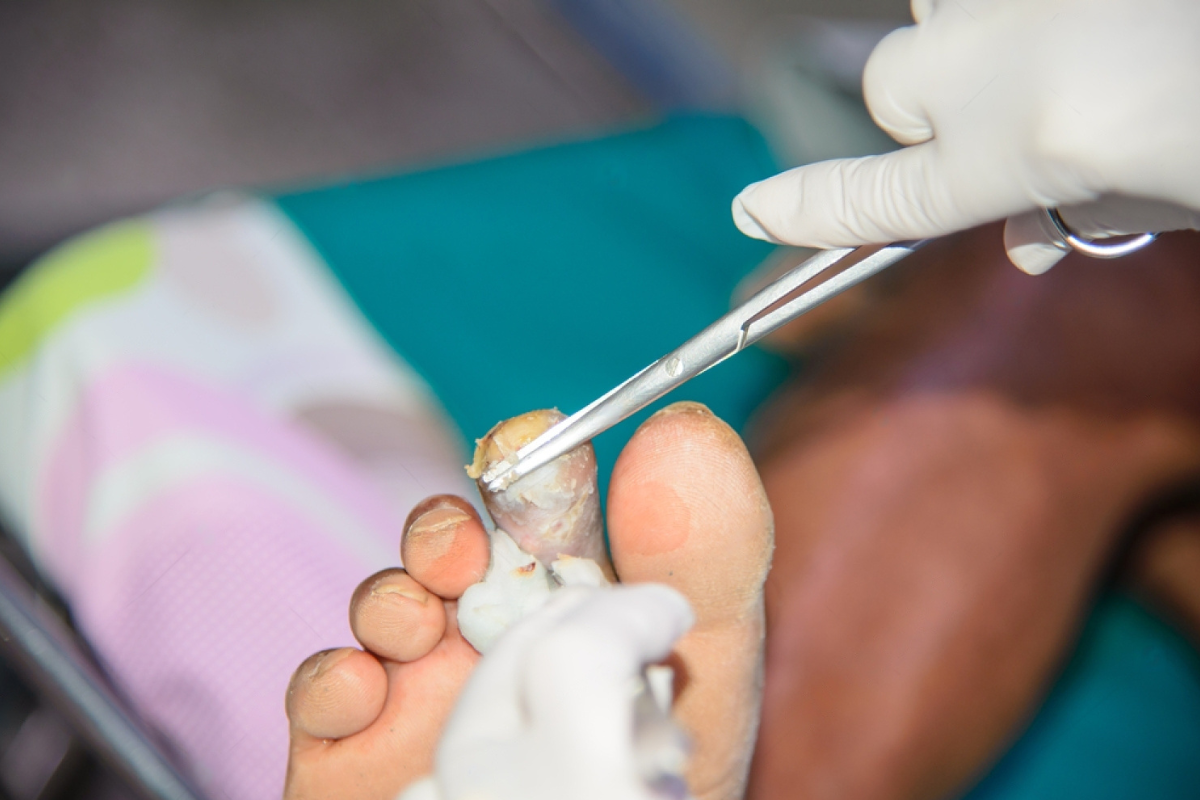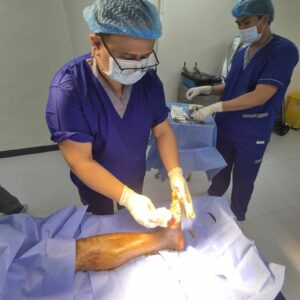When it comes to maintaining good foot health, we often don’t think about the possibility of necrosis until it’s too late. Necrotic foot is a serious condition that can lead to extensive tissue damage if not treated promptly. Understanding the role of orthopedic treatment for necrotic foot is crucial for individuals who are at risk. Early intervention can make all the difference in saving tissue and restoring mobility.
What is Necrotic Foot?
Necrotic foot occurs when the tissues in the foot die due to a lack of blood flow. This condition can arise from underlying medical conditions such as diabetes, peripheral artery disease, or severe infections. When blood circulation is impaired, oxygen and nutrients can’t reach the tissues, causing them to die. If untreated, necrosis can spread rapidly, causing further damage and potentially leading to amputation.
The causes of necrosis in the foot can vary, but common risk factors include poor circulation, infections, and uncontrolled diabetes. It’s essential to act quickly, as necrotic foot can worsen fast, leading to significant tissue loss.
Symptoms of Necrotic Foot
Necrotic foot can be difficult to identify at first, but knowing the signs can help you seek the right care quickly. Symptoms of necrotic foot may include:
- Discoloration: The skin may turn black or dark, indicating that tissue death is occurring.
- Pain: You may experience constant or intermittent pain in the affected foot.
- Swelling: Swelling is common, especially when an infection is present.
- Lack of Sensation: The affected area may feel numb or cold, as circulation to the foot is impaired.
- Foul-Smelling Wounds: If an infection has set in, you might notice a strong, unpleasant odor coming from an open wound.
If you notice any of these symptoms, it’s important to seek medical advice immediately to prevent further complications.
How Orthopedic Treatment Helps
Orthopedic treatment for necrotic foot plays a pivotal role in managing the condition and ensuring that further damage is prevented. The primary goal of orthopedic intervention is to control infection, preserve healthy tissue, and restore mobility.
Orthopedic specialists focus on several key aspects to ensure the healing of necrotic tissue:
- Infection Control: Through antibiotics and wound care, infection can be managed, preventing it from spreading.
- Debridement: A critical step, debridement involves removing dead tissue to allow healthier tissue to heal and regenerate.
- Mobility Support: Through physical therapy and, in some cases, surgical interventions, orthopedic specialists help regain foot function and prevent further complications.
By addressing these core issues, orthopedic solutions for necrotic foot offer hope for restoring health and preventing amputations.
Orthopedic Procedures for Necrotic Foot
There are several types of orthopedic procedures available to treat necrotic foot, depending on the severity of the condition:
- Surgical Treatments:
- Debridement: The process of removing dead or infected tissue is crucial for controlling the spread of necrosis.
- Reconstructive Surgery: In severe cases, where large sections of tissue are damaged, reconstructive surgery may be needed to rebuild the foot or restore its appearance and function.
- Non-Surgical Treatments:
- Medications: Antibiotics and pain management are often used to control infections and ease discomfort.
- Physical Therapy: To restore movement and strength, physical therapy can help individuals regain mobility after treatment.
These procedures, whether surgical or non-surgical, are essential in managing the complications of necrosis and saving as much tissue as possible.
Preventing Necrosis in Feet
While orthopedic treatment for necrotic foot is vital for managing the condition, prevention is always the best strategy. Preventing foot necrosis starts with understanding the risk factors and following a few important steps:
- Regular Check-ups: If you have diabetes, peripheral artery disease, or other conditions that affect blood flow, regular check-ups with a healthcare provider are critical.
- Foot Care: Keep your feet clean, moisturized, and free from injuries. Always check for signs of infection, especially if you have a chronic condition like diabetes.
- Healthy Lifestyle: Managing blood sugar levels, maintaining a healthy weight, and staying active can all reduce your risk of developing foot necrosis.
By staying proactive about foot care tips and addressing underlying conditions, you can significantly lower your chances of experiencing necrotic foot.
Why Choose Tec Orthopedics for Necrotic Foot Treatment?
At Tec Orthopedics, we offer expert, personalized care for patients dealing with necrotic foot. Our specialized treatment plans focus on controlling infection, preserving healthy tissue, and promoting healing. With advanced techniques like debridement and reconstructive surgery, we provide a comprehensive approach to managing necrosis and preventing further complications.
Our team of orthopedic specialists works closely with patients to develop a customized treatment plan that addresses their unique needs, helping them regain mobility and improve quality of life.
Takeaway
If you’re experiencing symptoms of necrotic foot, early detection and orthopedic care are essential to preventing further tissue damage and improving your outcomes. Whether you require surgical intervention or non-surgical options, working with an experienced orthopedic specialist is key to getting the best results.






